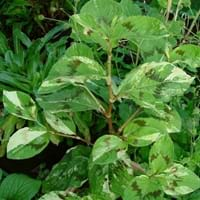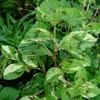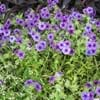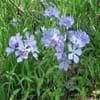Life Span
Perennial
Perennial
Type
Herbaceous Perennial
Grass
Origin
North America, United States, Northeastern United States, Mid-Atlantic United States, Southeastern United States, Central United States, South-Central United States, Canada, Eastern Asia, India, Nepal, China, Japan, Korea
North America, Canada, Mexico
Types
Not Available
Bigleaf hydrangea, Hortensia, Smooth hydrangea, Oakleaf hydrangea, Annabelle
Number of Varieties
Not Available
Habitat
Cliffs, Moist woods, Riverbanks
Forest edges, Hillside, Woods
USDA Hardiness Zone
5-9
Not Available
Sunset Zone
2a, 2b, 3a, 3b, 4, 5, 6, 7, 8, 9, 14, 15, 16, 17
1a, 1b, 2a, 2b, 3a, 3b, 4, 5, 6, 7, 8, 9, 10, 11, 14, 15, 16, 17, 18, 19, 20, 21, 22, 23
Habit
Upright/Erect
Upright/Erect
Flower Color
Light Green
Blue, Dark Purple, Light Purple, Red, White
Flower Color Modifier
Bicolor
Bicolor
Fruit Color
Dark Red, Copper
Not Available
Leaf Color in Spring
Green, Dark Green
Green, Light Green, Blue Green, Gray Green
Leaf Color in Summer
Green, Dark Green
Light Green
Leaf Color in Fall
Dark Green, Dark Red
Red, Green, Orange, Blue Green, Gray Green, Bronze
Leaf Color in Winter
Not Available
Tan, Sandy Brown
Leaf Shape
Elliptic
Oblovate
Plant Season
Summer, Fall
Spring, Summer, Fall, Winter
Sunlight
Full Sun, Partial Sun
Full Sun, Partial Sun
Type of Soil
Clay, Loam, Sand
Clay, Loam, Sand
The pH of Soil
Acidic, Neutral
Acidic, Neutral, Alkaline
Soil Drainage
Average
Average
Bloom Time
Late Summer, Early Fall
Early Summer, Summer, Late Summer
Tolerances
Drought
Pollution, Soil Compaction
Where to Plant?
Ground
Container, Ground
How to Plant?
From Rhizomes, Seedlings
Seedlings, Stem Planting
Plant Maintenance
Medium
Medium
Watering Requirements
Keep ground moist
Not Available
In Summer
Lots of watering
Drought Tolerant, Average Water
In Spring
Moderate
Moderate
In Winter
Average Water
Average Water
Soil pH
Acidic, Neutral
Not Available
Soil Type
Clay, Loam, Sand
Not Available
Soil Drainage Capacity
Average
Not Available
Sun Exposure
Full Sun, Partial Sun
Not Available
Pruning
In late autumn, Remove damaged leaves, Remove dead leaves
Remove damaged leaves, Remove dead branches, Remove dead leaves
Fertilizers
All-Purpose Liquid Fertilizer
All-Purpose Liquid Fertilizer
Pests and Diseases
Red blotch
Red blotch
Plant Tolerance
Drought
Pollution, Soil Compaction
Flower Petal Number
Not Available
Single
Foliage Texture
Medium
Fine
Foliage Sheen
Not Available
Not Available
Invasive
Sometimes
Not Available
Self-Sowing
No
Not Available
Attracts
Not Available
Bees, Flies
Allergy
Not Available
Chest tightness, Diarrhea, Dizziness, Nausea, Vomiting
Aesthetic Uses
Not Used For Aesthetic Purpose
Not Available
Beauty Benefits
Not Available
Not Available
Edible Uses
Not Available
Not Available
Environmental Uses
Air purification
Air purification
Medicinal Uses
Not Available
Fever, Kidney problems, Urinary tract problems
Part of Plant Used
Not Available
Flowers, Root
Other Uses
Decorative veneers, flooring, paneling, Showy Purposes
Not Available
Used As Indoor Plant
No
Not Available
Used As Outdoor Plant
Yes
Yes
Garden Design
Wildflower
Not Available
Botanical Name
PERSICARIA virginiana
PANICUM virgatum 'Northwind'
Common Name
Jumpseed
Northwind Switchgrass, Switchgrass
In Hindi
jumpseed
Hydrangea
In German
jumpseed
Hortensie
In French
jumpseed
Hortensia
In Spanish
jumpseed
Hortensia
In Greek
jumpseed
υδραγεία
In Portuguese
jumpseed
Hortênsia
In Polish
jumpseed
Hortensja
In Latin
Salire celeritate
Hibiscus
Phylum
Tracheophyta
Not Available
Class
Magnoliopsida
Not Available
Order
Caryophyllales
Not Available
Family
Polygonaceae
Not Available
Genus
Periscaria
Not Available
Clade
Angiosperms, Core eudicots, Eudicots
Not Available
Tribe
Not Available
Not Available
Subfamily
Not Available
Not Available
Number of Species
Not Available
Not Available
Importance of Jumpseed and Northwind Switchgrass
Want to have the most appropriate plant for your garden? You might want to know the importance of Jumpseed and Northwind Switchgrass. Basically, these two plants vary in many aspects. Compare Jumpseed and Northwind Switchgrass as they differ in many characteristics such as their life, care, benefits, facts, etc. Every gardener must at least have the slightest clue about the plants he wants to plant in his garden. Compare their benefits, which differ in many ways like facts and uses. The medicinal use of Jumpseed is Not Available whereas of Northwind Switchgrass is Fever, Kidney problems and Urinary tract problems. Jumpseed has beauty benefits as follows: Not Available while Northwind Switchgrass has beauty benefits as follows: Not Available.
Compare Facts of Jumpseed vs Northwind Switchgrass
How to choose the best garden plant for your garden depending upon its facts? Here garden plant comparison will help you to solve this query. Compare the facts of Jumpseed vs Northwind Switchgrass and know which one to choose. As garden plants have benefits and other uses, allergy is also a major drawback of plants for some people. Allergic reactions of Jumpseed are Not Available whereas of Northwind Switchgrass have Chest tightness, Diarrhea, Dizziness, Nausea and Vomiting respectively. Having a fruit bearing plant in your garden can be a plus point of your garden. Jumpseed has no showy fruits and Northwind Switchgrass has showy fruits. Also Jumpseed is not flowering and Northwind Switchgrass is not flowering . You can compare Jumpseed and Northwind Switchgrass facts and facts of other plants too.





